What is jewelry casting? Jewelry casting is an art that has been long used for thousands of years for jewelry making. With improvements in technology and the advent of superb tools and machinery, jewelry casting is an art that is more dynamic today than ever. Whether you want custom-made piece of jewelry or have to make a bulk order of similar types of jewelry, casting is a process that can help you achieve both.
Also called jewelry wax casting, casting uses a wax pattern that is made into a mold for being filled with molten silver or metal to create an intricate piece of jewelry.
The process involve great temperatures and even greater precision for excellent results. Jewelry casting is a process that has allowed designers and jewelry makers to bring their ideas to life and produce gorgeous pieces of jewelry. There are 4 steps to the basic process of jewelry casting.
Creating the Mold

Once we have a 3D print or a wax pattern we can create a mold. There are several ways of creating a mold but the most common are rubber and metal molds. The mold will ensure the intricacies of your design are kept throughout the casting process.
Creating the Tree & the investment process
 Once we have the mold we will "shoot" wax into the mold. This will create the tree which will placed into an investment. Once the investment material has settled, the flask will be then placed into a burning kiln which helps burn away the wax leaving behind a cavity that works as the final mold for the jewelry piece. The wax melts out through a couple of “sprues” that are attached to the bottom of the mold before placing it in the kiln. The number of sprues depend on the size of the piece of jewelry. This is also called the burn out cycle in which wax models are connected to each other using a sprue forming a tree-like formation. This formation is then put into a metal flask which is filled with a slurry of plaster. The flask is then “debubblized” to get rid of any air bubbles or air pockets in the mold. Once the wax has melted away and the mold has been invested leaving behind no remaining wax residue and only a hollow impression to serve as a mold for jewelry, it is time to pour the metal of your choice.
Once we have the mold we will "shoot" wax into the mold. This will create the tree which will placed into an investment. Once the investment material has settled, the flask will be then placed into a burning kiln which helps burn away the wax leaving behind a cavity that works as the final mold for the jewelry piece. The wax melts out through a couple of “sprues” that are attached to the bottom of the mold before placing it in the kiln. The number of sprues depend on the size of the piece of jewelry. This is also called the burn out cycle in which wax models are connected to each other using a sprue forming a tree-like formation. This formation is then put into a metal flask which is filled with a slurry of plaster. The flask is then “debubblized” to get rid of any air bubbles or air pockets in the mold. Once the wax has melted away and the mold has been invested leaving behind no remaining wax residue and only a hollow impression to serve as a mold for jewelry, it is time to pour the metal of your choice.
Casting jewelry
Using a proper jeweler’s centrifuge, the melted metal is poured into the mold being evenly distributed. The centrifuge helps create the inertia which is necessary for molding. After the burning out process, a swing arm with a cradle carries the flask in direct alignment with a container which will be used for holding the poured material. While the arm is in a crooked position, the container will be heated to melt the metal, the temperatures and the method used depend on the technicality of the equipment and the type of metal. Once the metal is at the desired temperature, the centrifuge is released, slinging the metal at high a speed from the container to fill the flack before it comes to rest.

Another method to cast jewelry very similar to centrifuge casting is vacuum casting. Melted material is poured with enough force into a flask for it to funnel through minute, intricate, cavities before it cools. It is also possible to cast jewelry without a centrifuge by simply pouring the melted material into the mold using a metal-specific syringe as a pump. Once the metal has been poured, it is allowed to cool down for a few minutes before being dunked into cold water to retain its final shape. The amount of time required for the cooling process depends on the type of metal that is being used and its melting point.
Buff and Polish
Next, the jewelry is given its final look by using a buffing wheel to give the piece a shiny, complete finish. Buffing machines, enamel clothes, polishes and filers can be used to the give the final piece the desired shape and style. If the piece has stones this is when they will be set.
Plating
 The jewelry is submerged into a vat of chemicals to plate with gold. We offer several different color finishes: yellow, rose, silver, and black rhodium. Our plating is nickel free which avoids any allergic reactions.
The jewelry is submerged into a vat of chemicals to plate with gold. We offer several different color finishes: yellow, rose, silver, and black rhodium. Our plating is nickel free which avoids any allergic reactions. Quality Inspection
All of our products are hand inspected for any imperfections. This is to ensure we give our customers our best work. Once the pieces pass our inspection the pieces are ready to ship.









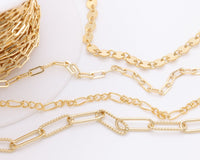
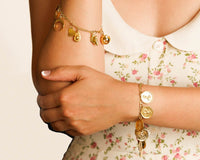
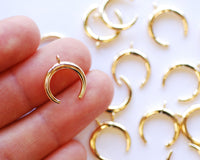
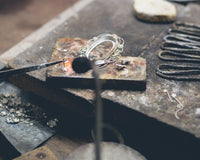
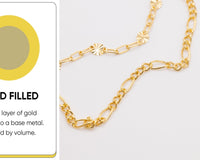






3 comments
Everett Jameson
Jewelry casting is a process that has allowed designers and jewelry makers to bring their ideas to life and produce gorgeous pieces of jewelry. We’re a supplier of jewelry, charms, and more.
https://erijewelry.com/products/permanent-welded-bracelet-booking
DNxIQzByaimZWLO
sjCGzVZtYDlreJSL
iJcNtmqG
UThMIZjFDpwqPXy